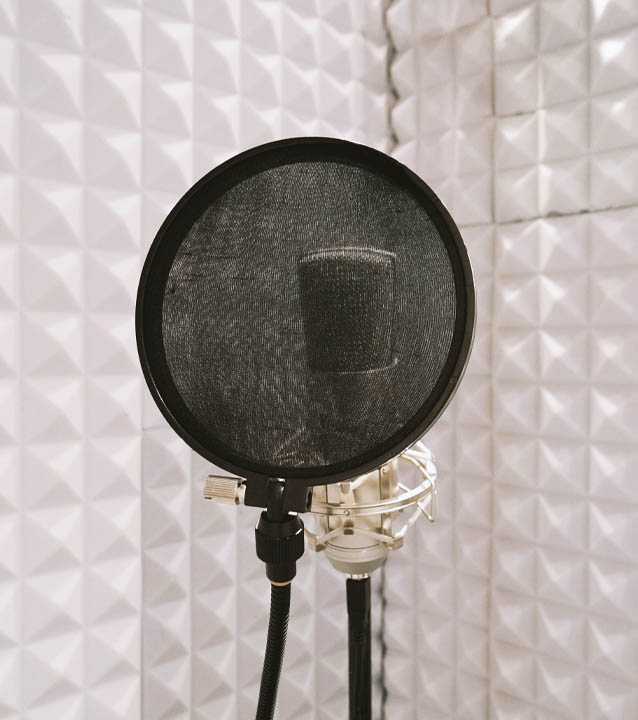Basics of Music Theory
Before jumping head first into Ableton or your lastest DAW it’s important to understand the fundamentals. Music theory is the backbone of every musical composition, providing a solid foundation for musicians to create captivating melodies and harmonies. Whether you’re a beginner eager to explore the enchanting world of music or an advanced musician looking to refine your skills, understanding the basics of music theory is essential. In this article, we will dive into the fundamental concepts of beginner music notes and scales, and explore how these notes can flawlessly work together within a key.
Unlocking the Harmony of Beginner Music Notes and Scales
When starting your musical journey, it’s important to grasp the concept of music notes and scales. Music notes represent specific pitches, while scales provide a framework of organized pitches that form the basis of melodies and harmonies.
Before we get into the fundamentals its important to understand the four pillars of music theory. Whether you’re an aspiring musician or simply someone who appreciates the beauty of melodies, understanding the basics of music theory can deepen your connection with music.
The Four Pillars Of Music Theory
Melody
Rhythm
Harmony
Form



Melody
Melody is the heart and soul of a musical composition. It is a sequence of notes played one after another, creating a musical line that captures the listener’s attention. Melodies are characterized by their pitch, rhythm, and contour. They can be simple or complex, conveying a range of emotions. A melody can be thought of as a story, with its highs, lows, twists, and turns, captivating the listener’s imagination.
Harmony
While melody focuses on individual notes, harmony is concerned with the relationship between multiple notes played simultaneously. It adds depth and richness to a composition, creating chords, progressions, and textures. Harmony is like the supporting cast in a musical piece, providing a backdrop for the melody to shine. It can evoke different moods, from joyous and uplifting to melancholic and introspective.
Rhythm
Rhythm is the heartbeat of music. It refers to the pattern of sounds and silences, the arrangement of beats, and the division of time. It gives music its pulse, energy, and groove. Rhythm can be steady and predictable or syncopated and complex, adding layers of interest to a composition. It is the driving force that makes us tap our feet, nod our heads, and dance to the beat.
Form
Form encompasses the overall structure and organization of a musical piece. It determines how the different sections of a composition fit together, creating a cohesive whole. Common musical forms include binary form (A-B), ternary form (A-B-A), and rondo form (A-B-A-C-A). Understanding the form of a piece can help you appreciate its structure and anticipate its musical journey.
Music Notes: Unraveling the Melodic Language
Music notes are symbols that represent specific pitches. They are written on a musical staff, a set of horizontal lines and spaces that provide a visual reference for pitch. Each note occupies a specific position on the staff, indicating its pitch in relation to other notes. As a beginner, it’s essential to familiarize yourself with the basic music notes.
C, D, E, F, G, A, and B are the foundational notes of the Western musical system. These notes are represented by circular dots or oval shapes on the staff. The position of the note on the staff determines its pitch, with higher notes placed on lines or in the spaces above the staff, and lower notes positioned below. Quick tip the Native Instruments Maschine series has built in scale mode with adjustable root notes for those looking to make music with pads!
Scales: Unlocking the Musical Palette
Scales are sequences of notes arranged in ascending or descending order. They provide a structured framework for creating melodies and harmonies. When playing within a specific scale, you ensure that your notes remain harmonically coherent. Let’s explore a few beginner-friendly scales:
Major Scale: The major scale is one of the most commonly used scales in Western music. It follows a specific pattern of whole steps (W) and half steps (H) between the notes. For example, the C major scale consists of the following notes: C, D, E, F, G, A, B, and C.
Minor Scale: The minor scale offers a contrasting sound to the major scale and is widely used in various musical genres. Similarly, it follows a specific pattern of whole and half steps. For instance, the A minor scale includes the notes: A, B, C, D, E, F, G, and A.
Understanding scales and their patterns allows you to construct melodies and improvise within a given key.

Once you have a grasp of beginner music notes and scales, it’s essential to explore how these notes can work harmoniously together within a key. A key refers to the tonal center of a musical composition, providing a sense of stability and coherence. Let’s uncover the harmonious relationship between music notes in a key:
Key Signatures: Unveiling the Tonal Landscape
Key signatures are symbols placed at the beginning of a musical composition to indicate the key. They provide crucial information about the set of sharps or flats that consistently appear throughout the piece. By understanding key signatures, musicians can navigate the tonal landscape with confidence.
For example, the key of C major has no sharps or flats, and its key signature is represented by a blank staff. However, the key of G major includes one sharp (F#), and the key of F major has one flat (B♭). These key signatures guide musicians in playing the correct notes within a particular key.
Chords: Building Harmony from Music Notes
Chords are combinations of three or more notes played simultaneously. They add depth, texture, and harmony to a musical composition. By harmonizing music notes, chords create a sense of progression and emotional impact.
In a given key, specific chords are associated with each note. These chords are built by stacking thirds (notes separated by intervals of two whole steps). For example, in the key of C major, the chords associated with each note are as follows:
C major (C, E, G)
D minor (D, F, A)
E minor (E, G, B)
F major (F, A, C)
G major (G, B, D)
A minor (A, C, E)
B diminished (B, D, F)
By understanding the chords within a key, musicians can create harmonies, explore chord progressions, and add depth to their compositions.
Progressions: Guiding the Musical Journey
Chord progressions are sequences of chords that create a sense of movement and tension within a musical piece. They form the backbone of many songs and compositions, providing a captivating journey for the listener. Common progressions include the I-IV-V (one-four-five) progression, which is prevalent in many popular songs, and the ii-V-I (two-five-one) progression, often found in jazz and blues.
Experimenting with different chord progressions allows musicians to craft unique musical expressions and evoke various emotions.

Comprehension
Well if you made it this far…. Congratulations! You’ve taken the first steps into the captivating realm of music theory. By understanding beginner music notes and scales, and how they harmoniously work together within a key, you have unlocked the door to endless possibilities in music creation. Embrace your newfound knowledge, continue to explore, and let the melodies flow from your fingertips. With Cob Web Audio as your guide, your musical journey is bound to be filled with joy, creativity, and sonic wonders.
We’re always looking to educate and offer our musical experiences and knowledge with those looking for insight. Be sure to follow our social media pages and look out for out latest articles and videos.
Contact
Our Team
team@cobwebaudio.com
Enquiries
613-706-0472
Site Navigation
DAW & Recording
Instruments & Equipment
Software & Plugins
Guides
Our INFO
Privacy Policy
About Us
Advertise On Cob Web Audio
Sponsored Content
Sitemap





